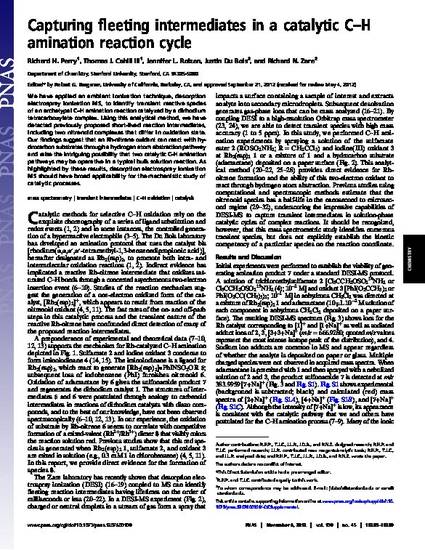
- Mass spectrometry,
- Transient intermediates,
- C-H oxidation,
- Catalysis
We have applied an ambient ionization technique, desorption electrospray ionization MS, to identify transient reactive species of an archetypal C–H amination reaction catalyzed by a dirhodium tetracarboxylate complex. Using this analytical method, we have detected previously proposed short-lived reaction intermediates, including two nitrenoid complexes that differ in oxidation state. Our findings suggest that an Rh-nitrene oxidant can react with hydrocarbon substrates through a hydrogen atom abstraction pathway and raise the intriguing possibility that two catalytic C–H amination pathways may be operative in a typical bulk solution reaction. As highlighted by these results, desorption electrospray ionization MS should have broad applicability for the mechanistic study of catalytic processes.
Available at: http://works.bepress.com/richard-perry/16/

©2012 National Academy of Sciences